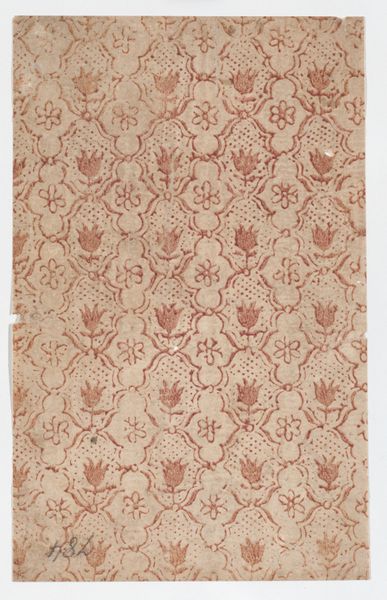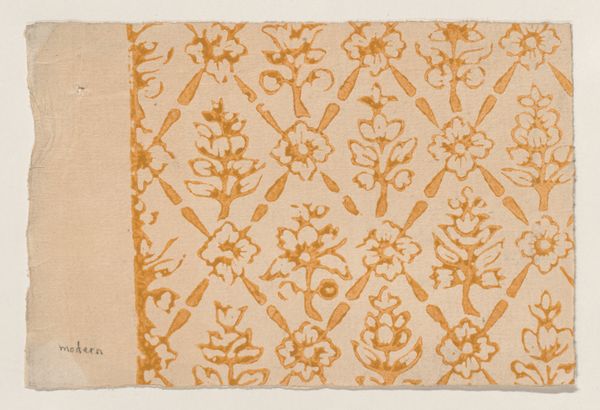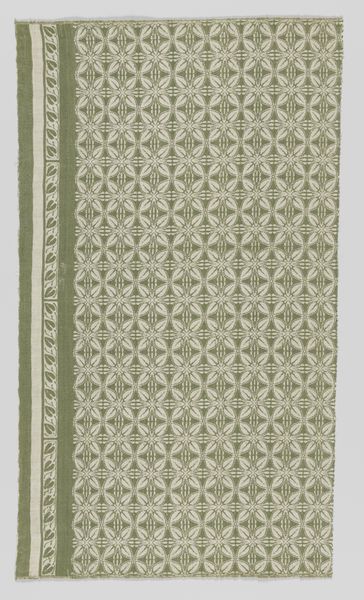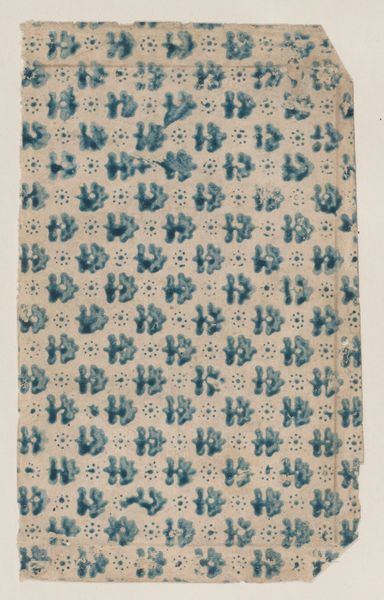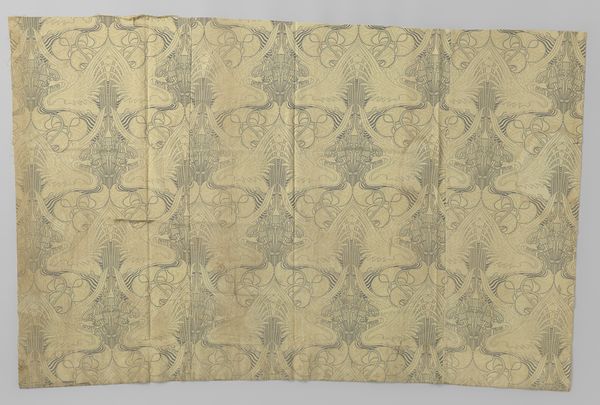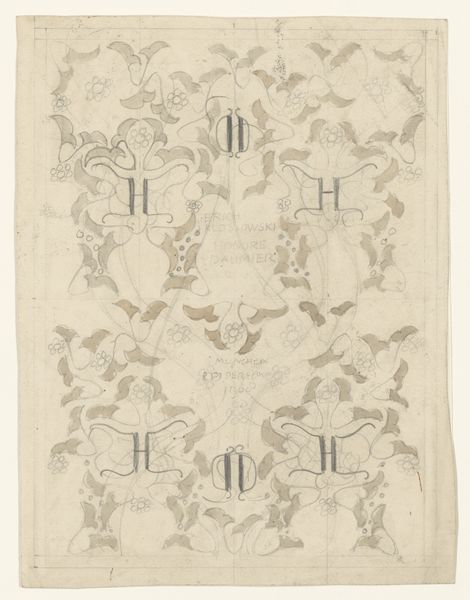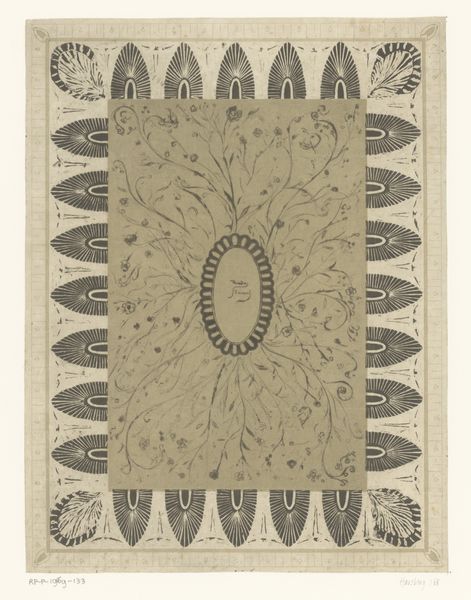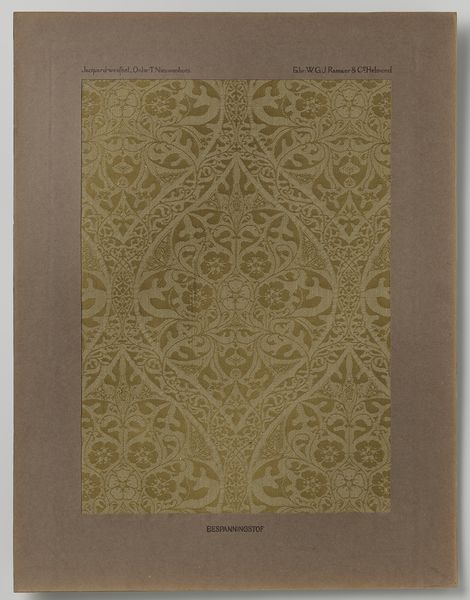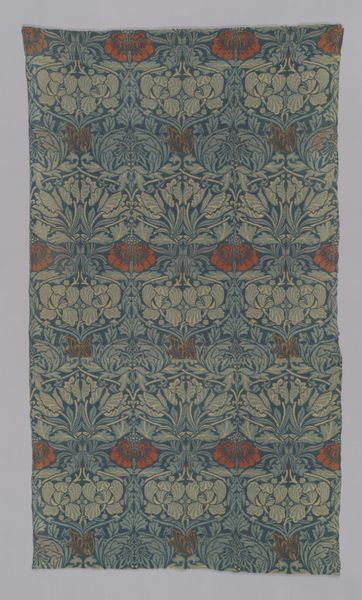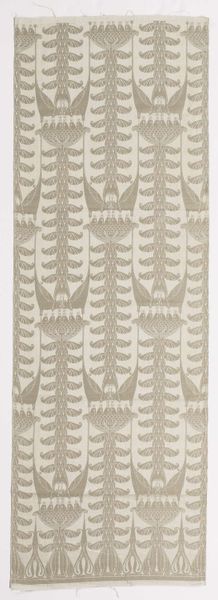
Staal bespanningsstof van linnendamast met dessin van zwaluwen en bijen 1911 - 1915
0:00
0:00
chrislebeau
Rijksmuseum
textile
#
organic
#
arts-&-crafts-movement
#
pattern
#
textile
#
organic pattern
#
repetition of pattern
#
vertical pattern
#
pattern repetition
Dimensions: height 32.0 cm, width 57.0 cm
Copyright: Rijks Museum: Open Domain
Curator: Looking at this piece, I'm immediately struck by its delicate, almost ethereal quality. The pale yellow is just lovely. Editor: This is "Staal bespanningsstof van linnendamast met dessin van zwaluwen en bijen"—roughly translated as "Sample of linen damask upholstery fabric with a design of swallows and bees"—created by Chris Lebeau between 1911 and 1915. It resides here at the Rijksmuseum. Curator: Upholstery fabric, you say? It has such a decorative but light touch for something so utilitarian. It really plays with positive and negative space. Editor: Well, consider the Arts and Crafts movement influencing Lebeau’s work, there's a deliberate elevation of craft to the level of fine art. This was produced, of course, in an era defined by growing industrialization. Damask weaving itself is a complex process, demanding highly skilled labor and specialized looms to produce the intricate, reversible patterns. Curator: Reversible patterns. That speaks volumes about design and utility and… almost challenges this high/low art dichotomy, right? I am interested in the interplay of repeated geometric structures, punctuated by those subtle figural elements. The eye constantly refocuses, trying to grasp a singular focal point, but there's no resolution, no definitive figure. Editor: Indeed! The swallows and bees act as subversive elements. The core design, created with linen, subtly invites reflections on the work and lives of artisans crafting textiles amid factory settings. Were these items made to promote the local beekeepers in the region, the local birdwatchers, the Arts and Crafts Society… It's hard to pin down exactly the motivation but they must have surely made their money back considering these fabrics became so very popular. Curator: So, beyond the aesthetic and repetitive allure, there's this embedded commentary on labor and consumption that pushes this from just 'decorative' into something much deeper. What do you think Lebeau, with this damask sample, hoped to convey or maybe provoke? Editor: Maybe just a reminder of the beauty in the everyday, and value in skilled labor... Curator: I like that thought! I do have to wonder now where it was first seen—how it sat and felt on those long-ago chairs.
Comments
No comments
Be the first to comment and join the conversation on the ultimate creative platform.
